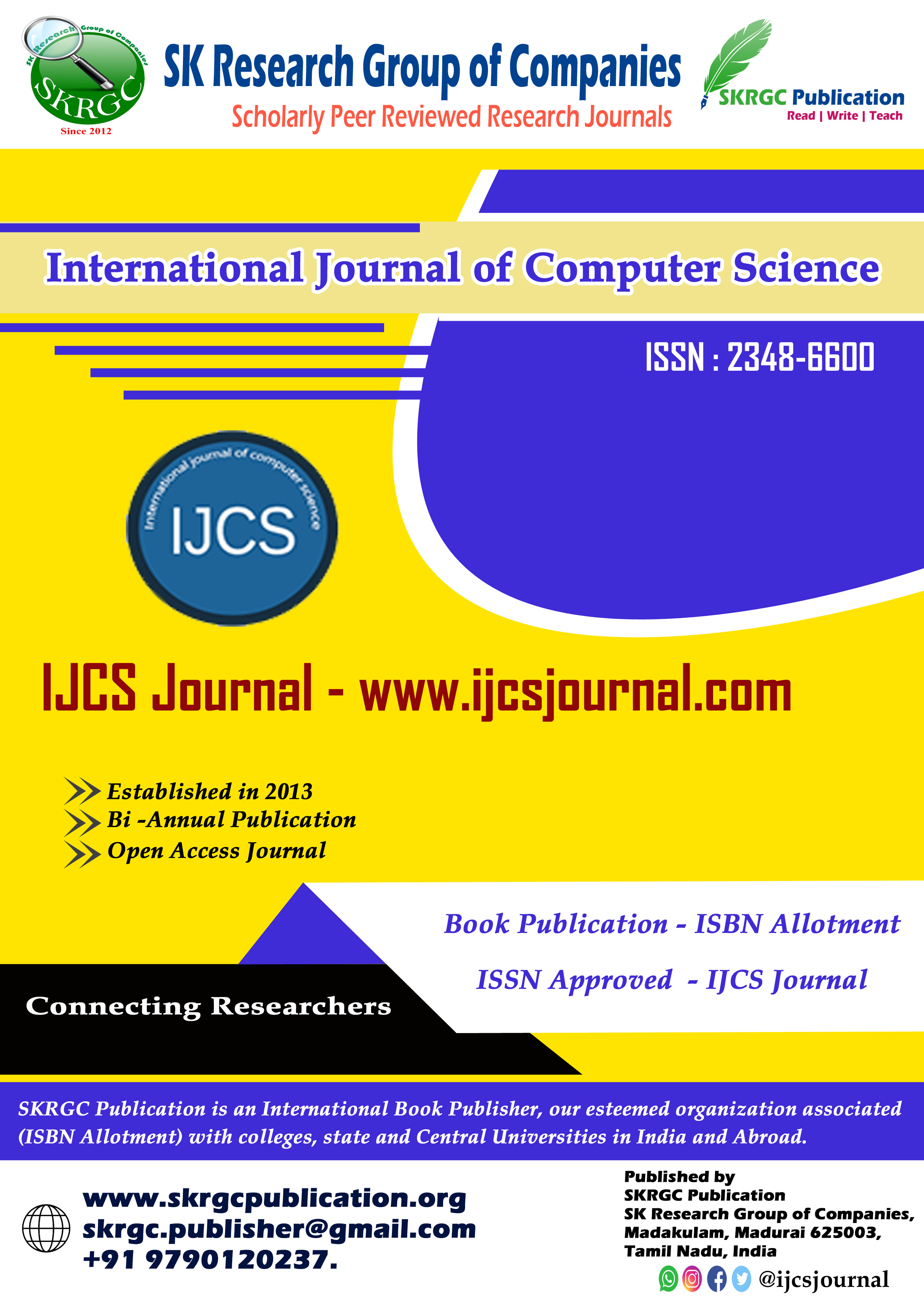OVERVIEW OF RESOURCE ALLOCATION TECHNIQUES IN CLOUD COMPUTING
International Journal of Computer Science (IJCS) Published by SK Research Group of Companies (SKRGC)
Download this PDF format
Abstract
An appealing processing approach is cloud computing, which enables users to alter data, run apps, and access personal files from any computer by using the internet and centrally located distant servers without the need to install additional software. Through the centralization of storage, memory, computation, and bandwidth, this technology enables more efficient computing. One major advantage of cloud computing is resource optimization; cost reduction and client satisfaction are the key objectives. This study presents a number of resource allocation options together with their associated issues. This work aims to provide academics and cloud users with an awareness of various implemented resource allocation algorithms.
References
[1] National Institute of Standards and Technology, “The NIST Definition of Cloud Computing”, Computer Security Division, Information Technology Laboratory (2011).
[2] Linan Zhu, Qingshui Li? and Lingna He, “Study on Cloud Computing Resource Scheduling Strategy Based on the Ant Colony Optimization Algorithm”, I International Journal of Computer Science, September 2012.
[3] Bhaskar Prasad, Eunmi Choi and Ian Lumb, “A Taxonomy and Survey of Cloud Computing Systems”, Fifth International Joint Conference on INC, IMS and IDC, 2009.
[4] Ikki Fujiwara,” Study on Combinatorial Auction Mechanism for Resource Allocation in Cloud Computing Environment”, Ph.D. thesis 2012.
[5] K C Gouda, Radhika T V and Akshatha M,” Priority based resource allocation model for cloud computing”, International Journal of Science, Engineering and Technology Research, January 2013.
[6] Tram Truong Huu and John Montagnat, “Virtual Resource Allocations distribution on a cloud infrastructure”, IEEE, 2010.
[7] Wei-Yu Lin, Guan-Yu Lin and Hung-Yu Wei,” Dynamic Auction Mechanism for Cloud Resource Allocation”, IEEE/ACM 10th International Conference on Cluster, Cloud and Grid Computing.
[8] Linlin Wu, Saurabh Kumar Garg and Rajkumar Buyya, “SLA-based Resource Allocation for Software as a Service Provider (SaaS) in Cloud Computing Environments”, IEEE Computer Society 2011.
[9] Abirami S.P. and Shalini Ramanathan, “Linear Scheduling Strategy for Resource Allocation in Cloud Environment”, International Journal on Cloud Computing: Services and Architecture, February 2012.
[10] Javed Hussain and Durgesh Kumar Mishra,” An Efficient Resource
Scheduling In Cloud Using Abc Algorithm”, International Journal of Computer Engineering and Applications, June 201
[11] Z.Gong, X. Gu, and J. Wilkes, “PRESS: PRedictive ElasticReSource Scaling for cloud systems,” in CNSM 2010, October, pp. 9 –16.
[12] D. Meisner, B. T. Gold, and T. F. Wenisch, “PowerNap: elimi-nating server idle power,” SIGPLAN Not., vol. 44, pp. 205–216, March 2009.
[13] Hewlett-Packard, Intel, Microsoft, Phoenix Technologies Ltd.,Toshiba Corporations, “Advanced configuration and power in-terface specification,” 2010.
[14] D. Carrera, M. Steinder, I. Whalley, J. Torres, and E. Ayguade,“Utility-based placement of dynamic web applications with fair-ness goals,” in IEEE NOMS, April 2008, pp. 9 –16.
[15] C. Tang, M. Steinder, M. Spreitzer, and G. Pacifici, “A scalable application placement controller for enterprise data centers,” in WWW2007. New York, NY, USA: ACM, 2007, pp. 331–340.
[16] R. Yanggratoke, F. Wuhib, and R. Stadler, “Gossip-based resource allocation for green computing in large clouds (long version),” KTH Royal Institute of Technology, https://eeweb01.ee.kth.se/upload/publications/reports/2011/
[17] TRITA-EE 2011 036.pdf, Tech. Rep. TRITA-EE 2011:036,April 2011.
[18] L. Breslau, P. Cao, L. Fan, G. Phillips, and S. Shenker, “Web caching and Zipf-like distributions: evidence and implications,” in INFOCOM, vol. 1, 1999, pp. 126 –134.
[19] G. Jung, M. Hiltunen, K. Joshi, R. Schlichting, and C. Pu, “Mis-tral: Dynamically managing power, performance, and adaptation cost in cloud infrastructures,” in ICDCS2010, 2010, pp. 62 –73.
[20] B. Speitkamp and M. Bichler, “A mathematical programmingapproach for server consolidation problems in virtualized data centers,” IEEE TSC, vol. 3, no. 4, pp. 266 –278, 2010.
[21] N. Tolia, Z. Wang, P. Ranganathan, C. Bash, M. Marwah, and X. Zhu, “Unified thermal and power management in server en-closures,” ASME Conference Proceedings, vol. 2009, no. 43604, pp. 721–730, 2009.
[22] M. Cardosa, M. Korupolu, and A. Singh, “Shares and utilities based power consolidation in virtualized server environments,” in IM 2009, pp. 327 –334.
[23] F. Wuhib, R. Stadler, and M. Spreitzer, “Gossip-based resource management for cloud environments,” in CNSM 2010, October, pp. 1 –8.
Keywords
Cloud Computing, Resource Allocation Strategies (RAS), Virtual Machine, Service Level Agreement (SLA), CloudSim.

